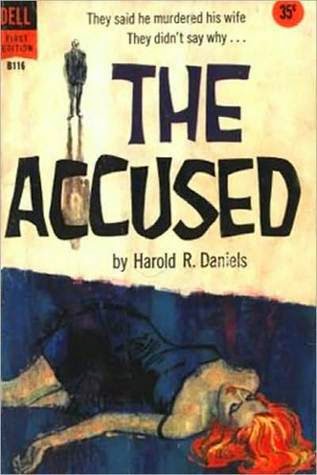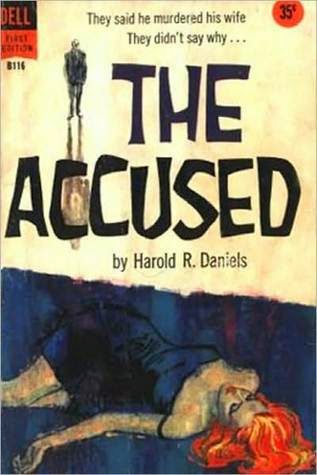I’m combining my post on books and short stories I read in the fourth quarter of 2014 with the total for the year because I read very little in the last three months of the year gone by—only nine novels and novellas and a handful of short stories. I spent far too much time playing chess and scrabble, watching films, and blogging.
In all, I read 41 novels and novellas and 31 short stories in 2014, an average of 3.41 and 2.58 a month, respectively. Clearly, I need to read more.
However, I'm satisfied with what I read.
The novels, novellas, and short stories were published over 155 years and covered several genres like crime and mystery, war and western, thriller and espionage, horror and science fiction, young adult, humour, and nonfiction.
The earliest book I read (reread actually) was A Tale of Two Cities by Charles Dickens, 1859, and the most recent book I read was Gray Mountain, 2014, by John Grisham.
There were some notable takeaways from my reading in 2014.
01. Interviews with my blog friends Charles Gramlich and Elizabeth Spann Craig (look in the sidebar). My thanks to both for their very prompt and enthusiastic response to my questionnaire. I hope to do more author interviews in 2015.
02. I read more contemporary fiction last year than I ever did since I started blogging in 2009—11 novels and novellas and four short stories published this century. I should celebrate!
03. Most difficult book I read was The Sound and the Fury by William Faulkner, 1929. I almost gave up after the first few pages.
04. At five novels, Jack Higgins (Harry Patterson in real life) was the most read author of the year. He might be the first to breast the tape again this year.
05. Book that resonated with me the most was the media-centric The Imperfectionists by Tom Rachman, 2011. A journalist’s life in Rome isn't very different from that of one in Bombay or Delhi. The young author shows you how to write nonfiction and make it read like fiction.
06. The White House Connection by Jack Higgins, 1998, and Deception Point by Dan Brown, 2001, had two of the most improbable plots. Among other things, it’s very easy to pull one over the President of the United States.
07. Late 2014, I kicked off my own ‘first novels’ challenge with The Hardy Boys: The Tower Treasure by the pseudonymous Franklin W. Dixon, 1927, and War Against the Mafia by Don Pendleton, 1969.
08. Two titles I found discomfiting to an extent were both legal novels—Defending Jacob by William Landay, 2012, and Gray Mountain by John Grisham, 2014.
09. The grittiest crime novel and police procedural was Public Murders by Bill Granger, 1980.
10. In short stories, I enjoyed reading The Education of a Pulp Writer & Other Stories by David Cranmer, 2008-2014, and Green Acres, 2012, and Ding Dong Bell The Kitten in the Well, 2014, by Dorte Hummelshøj Jakobsen. Both David and Dorte are my good friends.
I have listed below all the novels and novellas and short stories I read in 2014. They are not in the order I read them. Rather, I have listed them according to their year of publication, from the earliest to the most recent.
Novels & Novellas
1859 - A Tale of Two Cities by Charles Dickens (reread)
1888 - Buck Hawk, Detective by Edward L. Wheeler
1899 - The Bread Line: A Story of a Paper by Albert Bigelow Paine
1900 - Sister Carrie by Theodore Dreiser
1907 - The Rome Express by Arthur Griffiths
1927 - The Hardy Boys: The Tower Treasure by Franklin W. Dixon
1928 - The Dunwich Horror by H.P. Lovecraft
1929 - The Sound and the Fury by William Faulkner
1933 - Carved in Sand by Erle Stanley Gardner
1951 - Bullet Proof by Frank Kane
1951 - A Noose for the Desperado by Clifton Adams
1957 - Hostage for a Hood by Lionel White
1957 - The Legion of the Damned by Sven Hassel
1960 - To Kill a Mockingbird by Harper Lee (reread)
1962 - The Loneliness of the Long Distance Runner by Alan Sillitoe
1963 - The Dark Side of the Island by Jack Higgins
1963 - The Power of Your Subconscious Mind by Joseph Murphy
1968 - Greylorn by Keith Laumer
1969 - War Against the Mafia by Don Pendleton
1971 - The Last Place God Made by Jack Higgins (reread)
1972 - The Savage Day by Jack Higgins
1973 - The Way to Dusty Death by Alistair MacLean
1975 - The Miracle of Mindfulness by Thich Nhat Hanh
1980 - The Man in the Moon by James Reasoner
1980 - Public Murders by Bill Granger
1982 - Touch the Devil by Jack Higgins
1986 - Stallion Gate by Martin Cruz Smith
1988 - The Hell Raisers (originally Saddle Pals) by Lee Floren
1998 - The White House Connection by Jack Higgins
1999 - The Renos by Wolf Lundgren
2001 - Deception Point by Dan Brown
2005 - Beating Around the Bush by Art Buchwald
2011 - The Imperfectionists by Tom Rachman
2012 - The Red Reef by James Reasoner
2012 - Defending Jacob by William Landay
2012 - A Body in the Backyard by Elizabeth Spann Craig
2012 - Rendezvous by Nelson DeMille
2013 - Splatterpunk: AN.AL—The Origins by Athul DeMarco
2014 - The Button Man by Mark Pryor
2014 - The Common Room by K.B. Rao
2014 - Gray Mountain by John Grisham
Short Stories
1856 - The Wreck of the Golden Mary by Charles Dickens
1893 - The Mystery of the Semi-Detached by Edith Nesbit
1899 - Anne by Fanny Stevenson
1902 - The Fifth String by John Philip Sousa
1902 - The Conspirators by John Philip Sousa
1902 - Experiences of a Bandmaster by John Philip Sousa
1911 - Comrades by Elizabeth Stuart Phelps
1912 - Smothered in Corpses, three stories by Ernest Bramah
1913 - The Adventure of the Dying Detective by Arthur Conan Doyle
1917 - Whiffet Squirrel by Julia Greene
1922 - The Suppressed Poems of Ernest Hemingway
1933 - Hot Goods by Ray Cummings
1935 - Who Murdered the Vets? by Ernest Hemingway
1940 - Day Time Stopped Moving by Bradner Buckner
1943 - Nice Corpses like Flowers by Dorothy Les Tina
1948 - Charles by Shirley Jackson
1949 - The Witch by Shirley Jackson
1951 - The White Fruit of Banaldar by John D. MacDonald
1953 - Lamb to the Slaughter by Roald Dahl
1953 - The Complete Stories of Evelyn Waugh
1954 - The Intruders by Evan Hunter
1954 - Sorry: Wrong Dimension by Ross Rocklynne
1954 - The Father-Thing by Philip K. Dick
1956 - Love Story by Irving E. Cox
1959 - Rain, Rain, Go Away by Isaac Asimov
1960 - Hemingway in Space by Kingsley Amis
1963 - A Woman on a Roof by Doris Lessing
2008 - The Education of a Pulp Writer by David Cranmer
2010 - Killing Trail, four stories by Charles Allen Gramlich
2012 - Green Acres by Dorte Hummelshøj Jakobsen
2014 - Ding Dong Bell The Kitten in the Well by Dorte Hummelshøj Jakobsen
















